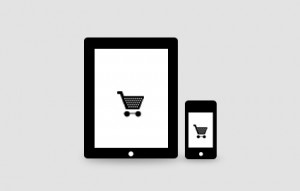
The expansion of mobile and the evolution of e-commerce in France, Europe and Canada
The expansion of mobile in France and Europe
In September, Médiamétrie (French audience and media measurement and report) published results that show that mobile screens (smartphone & tablet) now represent 52.7% of the internet traffic in France. Mobile devices have become the primary source of traffic in this country. (In these figures, Android represents 51.2% of the visits compared to 48.6% for iOS.)
In the meantime, Twenga unveiled an infographic showing that Europe has the highest mobile penetration rate in the world (129% compared to 109% in North America).
This point of crucial turnaround follows the Google algorithm update in April 2015 that favored responsive sites displaying their content on desktops as well as on mobiles in search results, and that was rightly nicknamed "Mobilegeddon."
These statistics reflect the two major trends in the French and European markets: the consumers now surf (the web) mainly via mobile (and tablet) and they are getting more and more used to making purchases on this medium.
The consumer is, more than ever, in a position to choose the purchase channel they prefer and expect companies to develop on the same level as them.
What is the impact of m-commerce?
When looking at which countries purchase the most on mobile, France is ranked 6th with 22.1% behind the U.K. (31.1%), Germany (29.7%), Spain (29.1%), the Netherlands (28.5%) and Italy (27.8%). (Rate calculated on the number of purchases on the internet made from a mobile, source - Twenga)
Although we note that the growth in m-commerce is not as developed in France as in its neighbors, the fact remains that 50% of e-commerce site traffic comes from mobile devices and that 71% of purchase paths start on smartphones or tablets (according to a JVWEB Agency study).

The majority of m-commerce purchases are made via tablet (58%) for now and a lower proportion via smartphone (42%). These purchases represent 21% of e-commerce sales leaders for now and are expected to lead French m-commerce to 7 billion euros before the end of 2015 (compared to 4 billion in 2014).
The Canadian Surprise
In Canada, the evolution seems similar at first glance. With an internet penetration rate of 87%, Canadians are among the most connected in the world and the mobile screens represent 56% of internet visits there (source - Comscore).
The m-commerce numbers caught our attention: off the 60% of Canadian internet users that make their purchases online, 19% of the buyers interviewed said they had made a mobile purchase within the last 12 months and 15% said they had made a purchase on their tablet during the same period (according to an Ipsos & PayPal study).
We also note that online buyers prefer applications to browsers, with 55% of the consumers finalising their purchases on an application compared to 52% on a mobile browser.
Figures would bode well for Canada if 68% of online purchases (desktop & mobile altogether) weren’t bought from U.S. and international retailers!
It’s the same thing in Quebec where only 25% of the dollars spent for online purchases have been on Quebec websites (compared to 48% on American e-commerce sites) (source – CEFRIO).
Are these results due to increased consumer interest in products provided by American companies? Or are Canadian and Quebec companies behind in terms of e-commerce?
In Canada, only 46% of the companies (no matter their size) have a website (not to mention a commercial site), whereas in France 64% of businesses have their own websites (according to a 1mn30 Agency study).
It may be one of the causes of significant e-commerce (and consequently of m-commerce) related delays that we see with Canadian companies.


